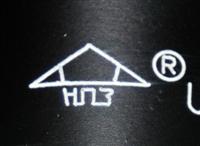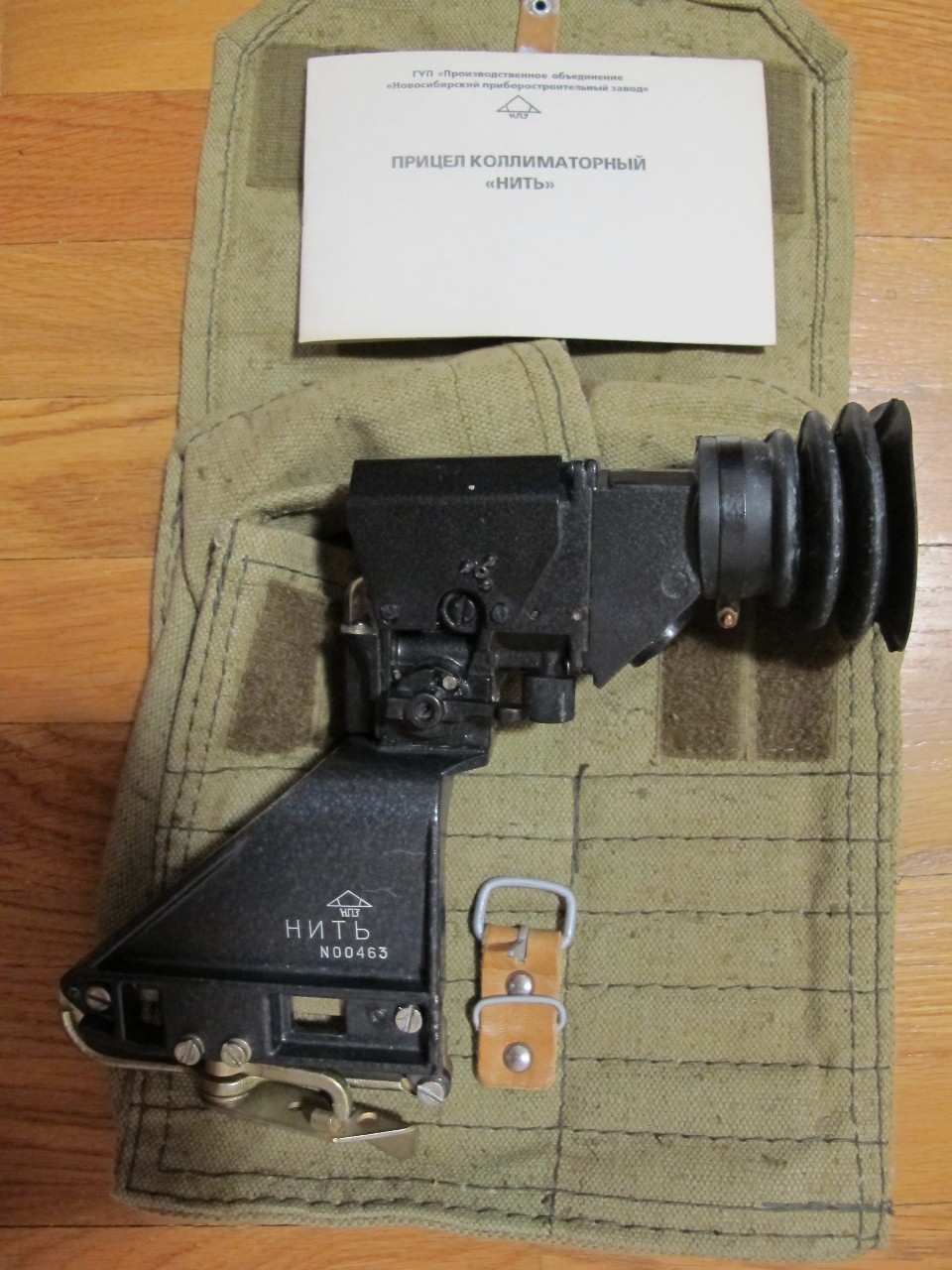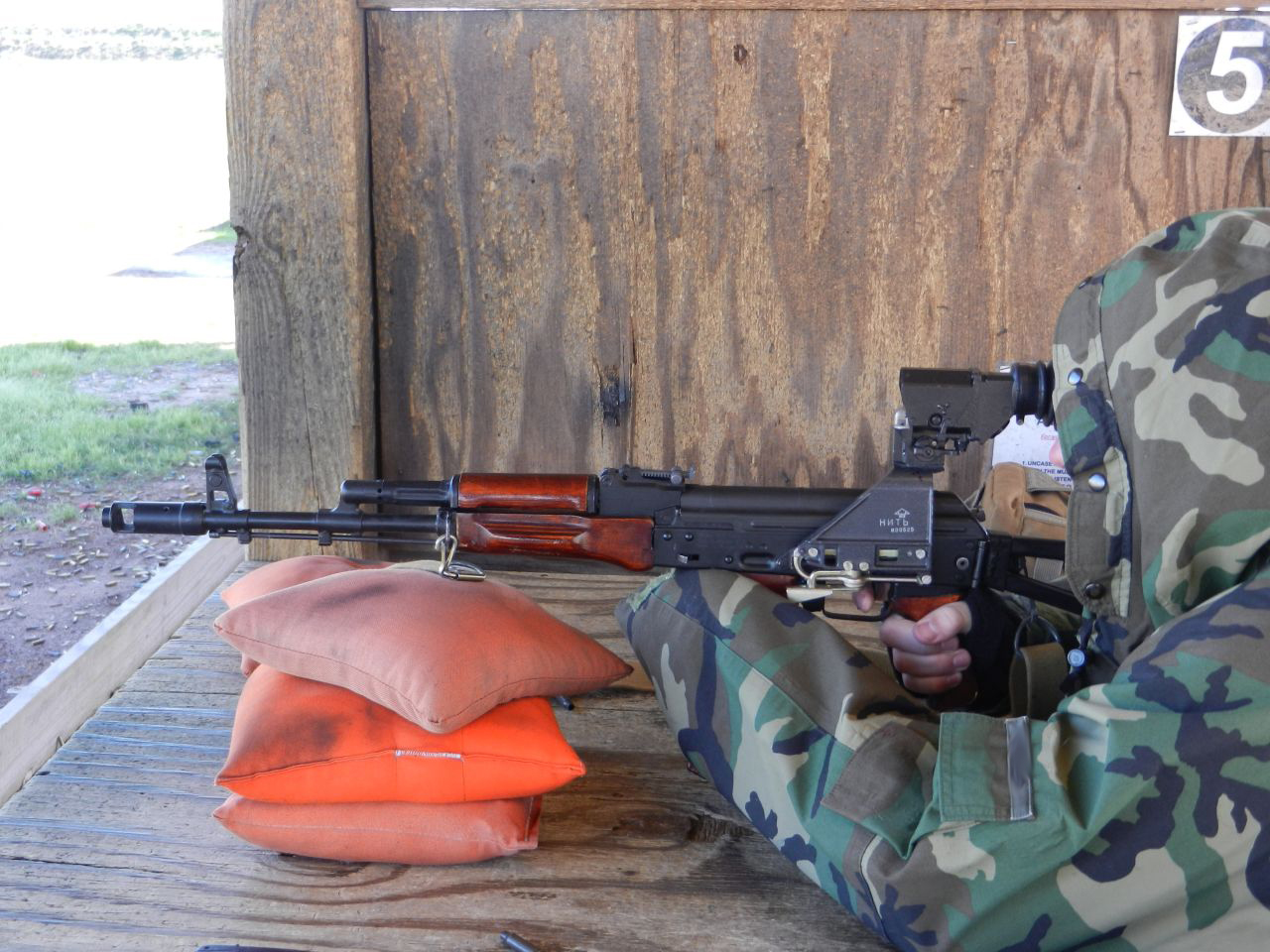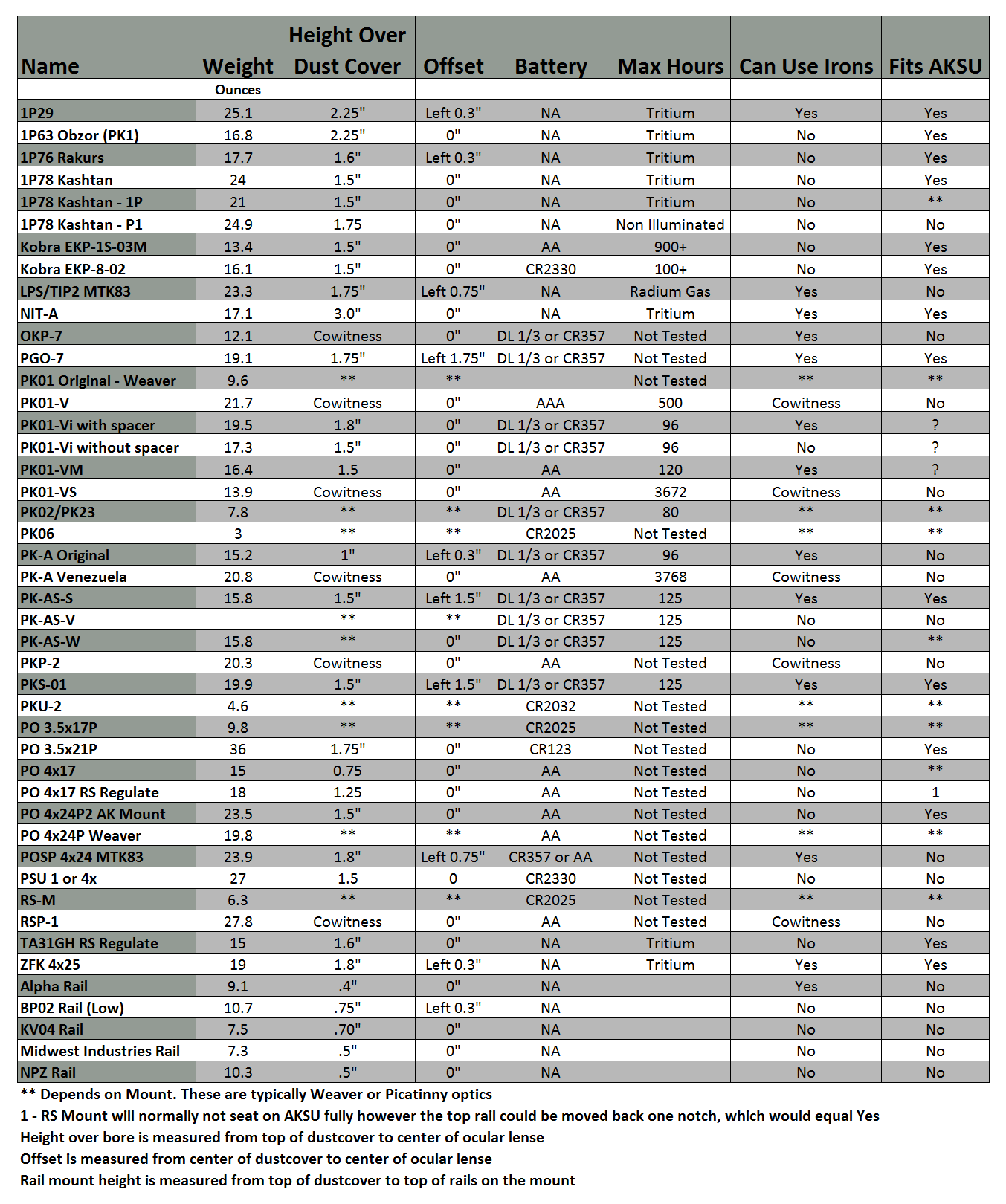To me NIT-A has always been one
of the more interesting Russian optics and it has
without doubt set the standard for being the highest
mounted optic that I believe I've seen on any AK (in
person anyway). If you are fan of co-witnessing you
might as well skip this review, NIT-A is liable to
give you a heart attack due to how high it sits :)
NIT-A was adopted by the Russian
Army and has seen action in the Chechen conflicts.
I passed on the NIT-A when they
made a brief appearance in the States back in
2005-2006, but I have always wished that I would have
picked one up when I had the chance. As luck would
have it I recently bumped into a friendly overseas
collector who had one for a good price so I snagged it
and after getting a hold of it in person I really
wished I would have bought one a long time ago when
they were available.
First thing out of the box I learned something very
interesting about NIT...it is the forerunner of the
space age looking Obzor and appears to use the same
light gathering sensor method of making the reticule
always on. The lens coating is the same purplish color
and the reticule is the same green illumination, it
has a switch for darkening the view to make the
reticle higher contrast and it is tritium illuminated
for low light shooting (or it was tritium lit... mine
is almost completely gone). Interestingly to me it
uses a smaller version of the German post reticule
similar to 1P76 Rakurs instead of the Obzor's pattern.
I like the Obzor pattern quite a bit and think it's
pretty ingenious actually. NIT-A weighs 17 oz.
Light Sensor on the front and filter switch to
darken the FOV
NIT-A is zeroed by turning the dial with the X pattern
screw slots. There is one on the right side for
windage and one on the bottom for elevation. The long
switch is off/on
NIT-A reticule (always on during
daylight, originally tritium illuminated at night)
Obzor reticule, showing it's heritage from NIT
I had a chance to put a few
rounds down range and FWIW I think the sight is very
practical...like Obzor the reticule is easy to acquire
and works with both eyes open. When using both eyes I
found it was harder for the NIT-A (and Obzor) to
superimpose the reticule image due to the darker tint
of the lens...it tended to make my shooting eye
dominant which made the rest of the world disappear.
Other optics like Rakurs, PK-AS and Kobra are
generally easier to keep the reticule superimposed
because both eyes are seeing mostly the same
background. With NIT-A and Obzor it is clearly darker
in one eye than the other. Still works but I found it
required more concentration to keep both eyes open and
during different periods my shooting eye would become
dominant at random.
The height of NIT-A is actually
very comfortable when standing up...not so much
sitting down and I think it might be tough using it
when prone.
One thing I believe is probably true about Russian
optics is that it's not an accident some of them are
so high, I think they are designed for CQB/ on the
move, as well as for using ballistic helmets like the
K6-3
Atlyn for example. With the visor down there is
really no way to get on the irons from what I can see
and concepts like co-witness go out the window too, so
I believe part of the reason NIT-A is high is for
helmet use.
NIT-A received excellent reviews during
after action combat reports when used by the MVD
forces in Chechnya:
(Quote from Tantal)
"It truly made the grade back in
the day, being officially adopted by the MVD in
1995 after extensive testing inside Chechnya the
previous three years. It's actually the first 1x
both-eyes-open collimator officially placed into
service by Russian armed forces units. Just a
couple years later, the sight won a great deal
of praise after beng specifically cited in
official combat mission reports as playing a key
role in the successful outcome of several
important battles inside Daghestan in the hands
of ODON rapid deployment (special forces) units,
who received it as a standard issue item.
During
it's field trials, the MVD cited NIT-A's
performance as being measurably superior to
the army's sole standard daylight combat sight
of that era, the 1P29, as well as a few other
contenders that were also tested. Not sure
why, but it was most likely target acquisition
speed, and cost."
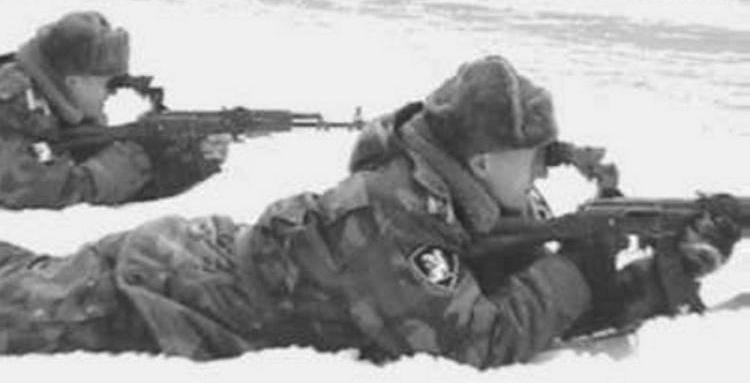
This isn't one of the optics I'd
recommend running out and getting for everyday use but
I find it to be a pretty interesting addition to the
collection and will be looking forward to getting more
range time with it.

